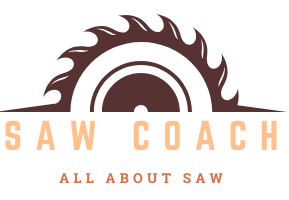A loose table saw blade represents a catastrophic safety hazard that can cause severe injury or equipment damage. Woodworkers must understand precise installation techniques, recognize warning signs of potential blade detachment, and implement rigorous maintenance protocols to ensure safe and accurate cutting performance across various woodworking projects.
Why Does a Table Saw Blade Come Loose?
Table saw blades can become loose due to multiple interconnected mechanical factors that compromise cutting precision and operator safety. Understanding these root causes is crucial for preventing potential accidents.
What Causes Initial Blade Instability?
- Mechanical Factors
- Improper arbor nut torque
- Worn mounting flanges
- Accumulated sawdust and debris
-
Vibration during extended operation
-
Installation Errors
- Incorrect blade alignment
- Unbalanced blade mounting
- Insufficient tightening techniques
How to Diagnose Blade Looseness?
Visual Inspection Checklist
| Symptom | Potential Cause | Recommended Action |
|---|---|---|
| Blade Wobble | Misaligned Flanges | Immediate Realignment |
| Unusual Cutting Noise | Loose Mounting | Check Arbor Nut Tension |
| Visible Side-to-Side Movement | Worn Components | Replace Mounting Hardware |
What Are Precise Tightening Techniques?
Proper blade installation requires methodical approach:
- Clean arbor and flanges thoroughly
- Ensure blade is oriented correctly
- Hand-tighten arbor nut initially
- Use appropriate wrench for final tightening
- Apply consistent, moderate pressure
- Avoid over-tightening which can damage components
Can Vibration Indicate Potential Blade Detachment?
Vibration serves as a critical warning signal:
- Minor vibrations suggest early-stage misalignment
- Significant shaking indicates imminent mechanical failure
- Consistent vibration requires immediate professional assessment
What Maintenance Prevents Blade Looseness?
Regular maintenance protocols:
– Inspect blade mounting weekly
– Clean flanges and arbor after each use
– Replace worn components promptly
– Use manufacturer-recommended tools
– Store saw in controlled environment
Safety Recommendations
Critical Safety Checklist:
– Wear protective eyewear
– Disconnect power before blade adjustment
– Use torque-specific wrenches
– Follow manufacturer’s installation guidelines
– Never operate saw with compromised blade mounting
Professional Insights
Experienced woodworkers recommend:
– Invest in high-quality mounting hardware
– Use precision alignment tools
– Understand your specific saw’s mechanical requirements
– Prioritize preventative maintenance
Conclusion

Preventing table saw blade from coming loose demands vigilance, technical knowledge, and consistent maintenance. By implementing systematic inspection and installation techniques, woodworkers can significantly reduce safety risks and maintain optimal tool performance.
Reference:
– Woodworking Safety Guidelines
– Professional Tool Maintenance Resources
– OSHA Woodworking Safety Standards
